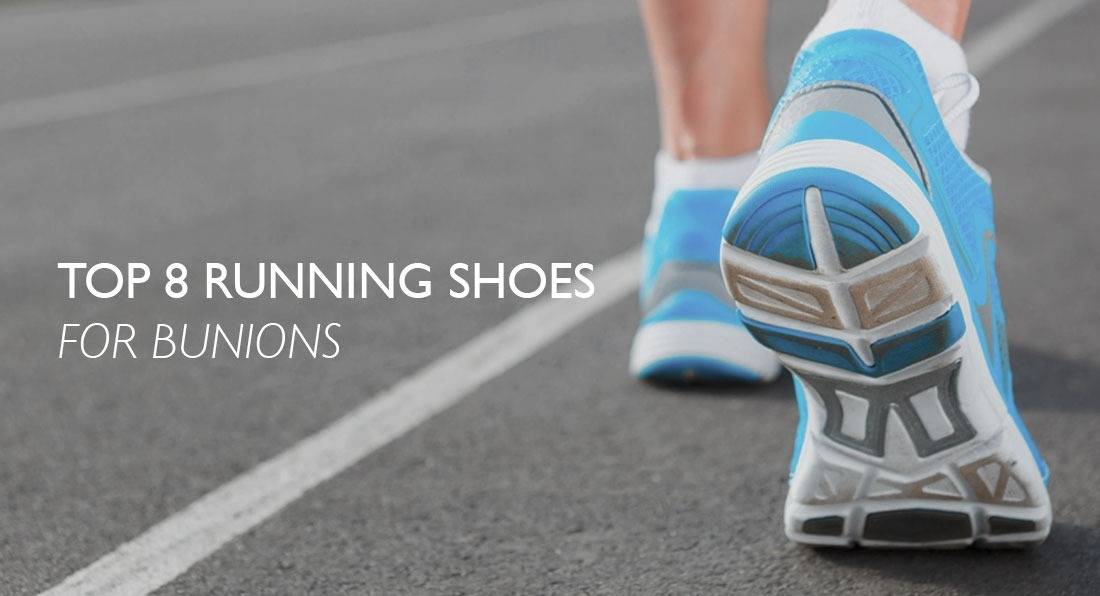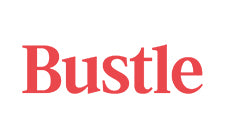- What Are Bunions?
- What causes Bunions to Develop?
- Signs and Symptoms of Bunions
- How to Prevent Bunions from Getting Worse
- How to Choose Running Shoes for Bunions
- Top 8 Running Shoes for Bunions
- The HOKA Clifton
- The New Balance 860
- The Brooks StealthFit
- The Brooks Glycerin GTS
- The New Balance 990
- The HOKA Arahi
- The Brooks Adrenaline GTS
- The HOKA Bondi
- Why Trust Lucky Feet Shoes?
- Where to Buy Running Shoes for Bunions?
Article Summary
Finding the right running shoe when you have bunions can feel like a challenge, but it doesn’t have to be. Bunions require footwear with the right balance of roomy toe boxes, supportive cushioning, and stability to keep pressure off sensitive joints. The wrong shoe can make every step uncomfortable, while the right shoes can help you run, walk, and train without pain.
In this updated 2025 guide, we’ve rounded up the 8 best running shoes for bunions, handpicked for their fit, comfort, and performance. Each model offers features that help reduce irritation, accommodate foot shape, and keep you moving comfortably while you’re training for a race, hitting the gym, or going for a daily walk.
We’ve included pros and cons for each style to help you make the right choice between the most current version available. Whether you’re looking for maximum cushioning, motion control, or a lightweight trainer, you’ll find a shoe here that works with your feet, not against them.
What Are Bunions?
A bunion is a bony bump that forms at the base of your big toe, where it meets your foot. It happens when the big toe gradually shifts inward toward the other toes, causing the joint at the base (the metatarsophalangeal joint) to stick out. This misalignment can lead to:
- Pain or tenderness
- Swelling and redness around the joint
- Calluses or corns where the toes overlap
- Restricted movement in the big toe
- Difficulty finding comfortable shoes
Bunions can be caused by a mix of factors, including genetics, foot shape, wearing tight or narrow shoes, arthritis, or past foot injuries.
For people with bunions, shoes with wide toe boxes, good cushioning, and minimal pressure on the joint can make a big difference in comfort.
What Causes Bunions to Develop?
Bunions form when the structure of the foot shifts out of alignment, causing the big toe to angle toward the other toes. Over time, this pushes the joint at the base of the toe outward, creating a visible bump. Several factors can contribute to bunion development:
- >
- Genetics: Inherited foot shapes, such as flat feet or low arches, can increase the risk.
- Poorly fitting shoes: Narrow, pointed, or high-heeled shoes that crowd the toes can speed up bunion formation. >
- Foot stress or injury: Repetitive pressure or trauma to the joint can cause misalignment.
- Arthritis: Conditions like osteoarthritis or rheumatoid arthritis can weaken the joint and ligaments.
- Overpronation: Rolling the foot inward excessively when walking can add strain to the big toe joint.
Bunions tend to worsen over time if left unaddressed, so early intervention—like choosing proper footwear and using orthotics—can help slow progression and reduce discomfort.
Signs and Symptoms of Bunions
Bunions can start small and painless, but over time, they often become more noticeable and uncomfortable. Common signs and symptoms include:
- A visible bump: A bony lump on the side of the foot at the base of the big toe.
- Toe misalignment: The big toe gradually turns inward toward the smaller toes.
- Swelling and redness: Inflammation around the joint, especially after long periods of standing or walking.
- Pain or tenderness: Discomfort that can be constant or occur only when wearing tight shoes.
- Calluses or corns: Skin thickening where the toes rub together or against footwear.
- Limited movement: Reduced flexibility in the big toe joint, making it harder to walk comfortably.
Symptoms often worsen if you wear narrow or unsupportive shoes, stand for extended periods, or have an active lifestyle without proper footwear. Addressing these signs early can help prevent further joint damage and ease discomfort.
How to Prevent Bunions from Getting Worse
While bunions don’t go away on their own, the right habits and footwear choices can help slow their progression and reduce discomfort. Here are effective ways to keep bunions from worsening:
- Wear proper footwear: Choose shoes with a wide toe box, low heel, and good arch support to reduce pressure on the bunion.
- Avoid narrow or pointed shoes: Tight, restrictive shoes can force the toes into unnatural positions, accelerating bunion growth.
- Use orthotics or inserts: Custom or over-the-counter orthotics can help align your foot properly and relieve stress on the joint.
- Stretch and strengthen your feet: Gentle toe stretches and foot exercises can maintain mobility and reduce stiffness.
- Apply padding or cushions: Bunion pads protect the area from rubbing and pressure caused by shoes.
- Maintain a healthy weight: Reducing excess weight can lessen the strain on your feet.
- Address foot pain early: See a podiatrist for evaluation before symptoms worsen or affect mobility.
By making these adjustments, you can walk more comfortably, slow the progression of the bunion, and protect your overall foot health.
How to Choose Running Shoes for Bunions
Finding the right running shoes when you have bunions means prioritizing fit, comfort, and support to protect your feet and reduce pain. Here’s what to look for:
- Wide Toe Box: Ample space in the forefoot lets your toes spread naturally without squeezing or rubbing the bunion.
- Seamless or Soft Upper: Materials that minimize seams and pressure points prevent irritation and rubbing on sensitive areas.
- Good Cushioning: Shock absorption in the midsole helps reduce impact stress on the bunion joint and surrounding tissues.
- Support and Stability: A supportive midsole and heel counter control foot motion to prevent overpronation, which can worsen bunions.
- Flexible Yet Durable: Shoes should bend where your foot bends but remain sturdy enough to support proper alignment.
- Orthotic-Friendly: A removable insole allows you to add custom orthotics if needed for added arch support or pressure relief.
- Proper Fit: Always try shoes on later in the day when feet are slightly swollen, and wear the socks you’d run in to get the best fit.
Choosing shoes with these features will make your runs more comfortable and help prevent further bunion irritation or pain.
Top 8 Running Shoes
for Bunions 2025
1
The HOKA Clifton
The HOKA Clifton is designed to keep you moving comfortably with its signature plush cushioning and generous toe box for a roomy fit, perfect for those dealing with bunions, slowing them down. This model adds an extra 3 mm of stack height and refines the fit to ease pressure on sensitive bunion areas. The breathable jacquard upper stretches gently over your foot, while the seamless design prevents friction that can aggravate bunions. A double-lock lace system keeps the tongue securely in place, eliminating unwanted rubbing during your stride. The Active Foot Frame™ cradles your heel for added stability, and the lightweight EVA foam midsole delivers soft, responsive cushioning that absorbs impact and reduces joint strain. Whether you’re logging everyday miles or out for a long walk, the Clifton 10 combines thoughtful design and cutting-edge comfort to protect your feet and help you enjoy every step pain-free.
Pros
- Plush cushioning
- Seamless, roomy and breathable upper
- Double-lock lacing for a secure fit
- Durable and long-lasting outsole
Cons
- Plush cushioning may feel too soft for some
- Higher stacked heel
- Not ideal for trail running

2
The New Balance Fresh Foam X 860
When bunion discomfort threatens to derail your runs, the New Balance Fresh Foam X 860 steps in with a perfect balance of stability and plush comfort. Designed to keep your foot aligned and protected, this shoe features Fresh Foam X cushioning that cradles your foot with softness—especially under the forefoot—helping to ease pressure on sensitive bunion areas during push-off. The engineered mesh upper offers a snug yet breathable fit, while the gusseted tongue locks in place to prevent rubbing or irritation around the bunion. For runners needing extra support, a medial post and reshaped midsole geometry work together to control overpronation and stabilize your stride without feeling bulky. With a 10mm drop, the 860 helps shift weight away from painful heels, making it an excellent option for those managing both bunions and heel pain, like plantar fasciitis. Eco-conscious runners will also appreciate its use of recycled and bio-based materials, ensuring your runs are kind to both your feet and the planet. Whether you’re training for your next race or just tackling daily miles, the 860 combines durability, comfort, and targeted support to help you run pain-free and confidently.
Pros
- Plush Fresh Foam X midsole cushioning
- 10mm drop helps shift pressure away from the heel
- Breathable mesh upper
- Medial post stability for overpronators
Cons
- Slightly heavier than minimalist running shoes
- May not be ideal for those with high arches
- May feel to firm for neutral runners and walkers

3
The Brooks Glycerin StealthFit
Imagine every step wrapped in a cloud of softness, where your foot feels gently cradled without any pinching or pressure. The Brooks Glycerin StealthFit is crafted with runners who have bunions in mind, featuring a slightly roomier toe box and heel that creates extra space where your foot needs it most. This thoughtful design helps reduce irritation and discomfort often caused by bunions, allowing you to run longer and feel better. The innovative double-jacquard upper molds comfortably around your foot while minimizing seams, preventing friction against sensitive bunion areas. Combined with Brooks' signature DNA Tuned cushioning and a newly engineered heel construction, the shoe softens each landing and powers your toe-offs with smooth, responsive energy. Durable yet flexible, the Glycerin StealthFit’s outsole offers reliable traction on varied surfaces, supporting you mile after mile. Whether you’re tackling long runs or want a plush, supportive shoe that caters to your unique foot shape, the Glycerin StealthFit delivers a luxurious blend of comfort and stability perfect for bunion relief.
Pros
- Plush nitrogen-infused DNA tuned midsole
- Double-jacaurd fabric upper
- Excellent durability and traction
Cons
- Slightly heavier than minimal trainers
- Less suited for trail or off-road running
- Limited color options

4
The Brooks Glycerin GTS
The Brooks Glycerin GTS is a top pick for runners managing bunions, offering a plush yet supportive ride designed to reduce pressure and irritation. Its nitrogen-infused DNA Tuned midsole delivers cloud-like softness underfoot while maintaining responsive toe-offs that help you power through every run. The engineered double jacquard knit upper stretches comfortably around the foot, accommodating bunions without feeling tight or restrictive.
With a wider platform for enhanced stability and a smooth 10mm drop that encourages natural, stable transitions, this shoe protects sensitive areas, like the toes and ball of the foot. The roomy toe box offers bunion sufferers extra space to move comfortably with the GuideRails system that supports your stride and keeps the foot aligned to prevent excess stress on painful bunion joints. Ideal for long road runs or daily training, the Glycerin GTS blends softness and structure for a shoe that helps you run longer with less discomfort.
Pros
- Plush nitrogen-infused DNA tuned cushioning
- Double-jacaurd fabric upper
- Lightweight for long-distance comfort without fatigue
Cons
- Heavier than most walking or running shoes
- May feel bulky for runners with narrow feet
- Not designed for trail or off-road running

5
The New Balance 990
Step into decades of trusted craftsmanship with the New Balance 990, a premier running shoe that perfectly balances comfort, support, and style. Featuring the innovative FuelCell midsole, this model provides responsive, propulsive cushioning that helps drive each stride effortlessly forward. Its roomy, streamlined upper combines pigskin suede and synthetic overlays without a restrictive midfoot saddle, offering a comfortable fit that accommodates bunions and other foot conditions without compromising stability. As part of New Balance’s MADE in the USA collection, the 990 boasts over 70% domestic value, reflecting high-quality American manufacturing standards. With ENCAP technology supporting the midsole’s durability and cushioning, plus reflective details and a TPU back tab for secure heel fit, this shoe is a perfect blend of tradition and modern innovation for runners seeking lasting comfort and support.
Pros
- Excellent arch support
- Cushioned heel for PF relief
- Roomy toe box
- Durable and long-lasting outsole
Cons
- Slightly heavier than other shoes
- Not built for high-performance running
- Firm and structured upper

6
The HOKA Arahi
Discover the perfect blend of comfort and support with the HOKA Arahi, designed to keep runners with bunions and other foot conditions moving smoothly. This lightweight stability shoe features HOKA’s signature EVA foam cushioning for a soft, joint-friendly ride that absorbs impact without sacrificing responsiveness. The breathable double-jacquard mesh upper provides excellent ventilation, and the plush tongue ensures all-day comfort during runs and casual wear.
Built around the innovative J-Frame™ technology, the Arahi expertly controls overpronation and supports low arches, delivering stability without added bulk. Its durable podular outsole with strategically placed rubber zones enhances traction and durability across various surfaces. The Arahi's reflective details help boost visibility in low light, making it a reliable, everyday running companion that balances plush cushioning with secure support.
Pros
- Lightweight deisgn
- Breathable jacquard mesh upper
- Durable podular outsole
- 3mm heel cushioning
Cons
- Stability features may feel firm
- Not ideal for trail or off-road running
- Limited color options

7
The Brooks Adrenaline GTS
Step confidently with the Brooks Adrenaline GTS, designed to provide targeted support and stability while offering extra room and comfort for bunions. Featuring innovative GuideRail® technology, this shoe gently guides your body’s natural motion to reduce strain on sensitive joints often affected by bunions and overpronation. Its engineered air mesh upper delivers breathability and a thoughtfully spacious fit that helps minimize pressure on bunions without sacrificing secure support or structure. The updated DNA Loft v2 midsole offers softer, lighter cushioning with a responsive bounce, providing pain-relieving comfort during walks, runs, or extended wear.
Pros
- Spacious toe box
- Breatheable upper
- Secure and flexible
Cons
- May feel narrow (on very wide feet)
- Heavier than minimalist shoes
- Limited color options

8
The HOKA Bondi
The women’s HOKA Bondi stands out as a top pick for runners and walkers managing bunions thanks to its generously wide toe box that offers ample space for bunions, hammer toes, and other foot conditions. Its MetaRocker design expertly redistributes pressure across the foot, helping to reduce pain often linked to bunions, plantar fasciitis, Morton's neuroma, and metatarsalgia. Certified by the American Podiatric Medical Association (APMA) for promoting foot health, the Bondi delivers superior cushioning and support to keep your feet comfortable mile after mile. Featuring a soft yet durable EVA foam midsole and an engineered mesh upper made with 55% recycled polyester, this shoe offers a breathable, flexible fit that adapts to your foot’s natural shape. The 5mm heel-to-toe drop and smooth MetaRocker technology provide a forgiving ride while promoting efficient gait. If you want a plush, supportive shoe that accommodates bunions without sacrificing style or performance, the Bondi 8 is an excellent choice.
Pros
- Wide toe box
- Lightweight with an extended heel
- MetaRocker design that smooths gait
- Reflective details
Cons
- Wider fit (might feel loose for narrow feet)
- Heavier than minimalist shoes
- Limited color options

Why Trust Lucky Feet Shoes?
At Lucky Feet Shoes, trust is not just a word; it's the cornerstone of our commitment to our customers. Here's why you can rely on us:
- Expertise: With years of experience in the footwear industry, our team possesses extensive knowledge about shoes, fit, and foot health. We understand that every foot is unique, and we strive to provide personalized recommendations to ensure the perfect fit.
- Quality Selection: We handpick every shoe in our collection, selecting only the finest brands and styles known for their quality, comfort, and durability. Whether you're looking for athletic shoes, casual footwear, or specialized orthopedic options, you can trust that our selection meets the highest standards.
- Exceptional Service: Customer satisfaction is our top priority. From the moment you walk through our doors or visit us online, our friendly and knowledgeable staff are here to assist you every step of the way. We take the time to listen to your needs and preferences, offering personalized recommendations and expert advice to help you find the perfect pair of shoes.
- Focus on Foot Health: At Lucky Feet Shoes, we understand the importance of foot health and the impact that proper footwear can have on overall well-being. Whether you're dealing with foot pain, arch support issues, or other foot-related concerns, our team can help you find shoes that provide the support and comfort you need.
- Community Engagement: We are proud to be active members of our local communities, supporting various charitable organizations, events, and initiatives that promote health, wellness, and education. When you support Lucky Feet Shoes, you're not just supporting a business—you're supporting a commitment to making a positive difference in the lives of others.
In conclusion, when you choose Lucky Feet Shoes, you're choosing expertise, quality, exceptional service, a focus on foot health, and community engagement. Trust us to help you find the perfect pair of shoes for your needs, and experience the difference that comes from shopping with a company that truly cares about its customers.
Where to Buy Running Shoes for Bunions
Choosing the right shoe can make all the difference when managing bunions, helping you stay comfortable and active every day. Whether you shop online or prefer visiting a store in person, Lucky Feet Shoes offers a wide range of bunion-friendly footwear, arch supports, and socks designed to ease pain and improve your foot health. Take advantage of our free personalized foot scan and expert advice to find the perfect fit for your unique needs.
With a large selection of sandals, comfort shoes, wide widths, walking and running shoes, plus customization options, Lucky Feet Shoes is your go-to destination for supportive, comfortable footwear. Find a store near you and step confidently toward better foot comfort today.

Jerick Sobie
Since 2005, I have been a dedicated small business owner specializing in footwear retail. With over 20 years of experience, my business partner and I have helped customers find the perfect shoes that combine style, comfort, and quality. Our expertise extends beyond local sourcing—we have traveled internationally to discover high-quality footwear that meets our customers’ needs. In addition to running my business, I have participated in numerous health fairs and educational seminars, sharing my knowledge on proper footwear and foot health. Committed to providing exceptional service, We carefully curate our selections to ensure the best fit and support for every customer.






















